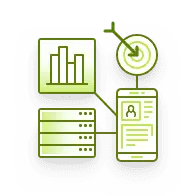When does direct store delivery makes sense for your business?
March 27, 2018 By Stacey Woods

Direct store delivery is the method of delivering your products directly to your customers. It is often associated with the food and beverage industry, as it’s used to move products with higher supply chain velocity and a short shelf life.
Direct store delivery can provide significant advantages to B2B wholesalers and distributors who want to move their own products through the supply chain.
How do you decide which method works best for your business and when direct store delivery is the better option?
Direct store delivery (‘DSD’) suits your business if your products fit one or more of these descriptions.
1.Easily damaged large items
If you have a product that is lightweight, large and fragile, it may suit DSD to prevent damage. An example would be crisps or bread that are easily squashed. It means reduced shipping costs for you and you controlling the handling to reduce the chance of damage.
2. Products with a short shelf life
Examples of these products are bread, dairy and eggs. They are high volume with a short shelf life. If they are shipped directly to retailers they spend less time in the supply chain and because they have a high turnover, stock can be replenished quickly.
3. High variety, low value products
If you produce a large range of low value items, your customers may prefer it if you manage delivery yourself. Because they are low value, it may not be cost efficient for the retailer to manage the large variety of items themselves.
4. Items requiring special handling
If you sell products that are oddly shaped which don’t fit into a shipping container, then direct store delivery allows you to maintain control of shipping to avoid damage in transit.
5. Complex products that require training
A direct store delivery model may work particularly well if your product needs training to understand how it works. Delivery drivers can be used to provide specialist product training at the retailer at the time of delivery, saving staff costs.
If your products fall into any of the categories above, it makes sense for you to look at a direct store delivery model.
To make this method work efficiently you will need route accounting software which includes mobile merchandising functionality, helping you to achieve the following 5 benefits.
1. You can better gauge demand
Direct store delivery allows you, the wholesaler or manufacturer, to take a hands-on approach to tracking demand for your products at-the-shelf. Your route staff can review the in-store merchandising and introduce your own promotions and shelf position of your products to increase sales.
2. Boost your route staff’s productivity and increase sales
Direct store delivery can be used to increase sales. With route accounting software you can turn your route staff into sales reps as they access previous sales orders, identify best-sellers and increase your sales.
During a standard delivery, your driver can take a new order whilst delivering the original one.
3. Take secure payments out in the field
Some route accounting software can integrate with popular payment gateways to enable secure payments and invoicing to be undertaken out in the field by your route staff. Flexible payment methods mean payments can be accepted via cash, check or a credit card too.
4. Increase your inventory visibility
Real-time updating of your inventory means you always know what you have in stock. You can easily track damaged or returned goods and quickly locate them. With this insight you can eliminate stagnant inventory and promote end-of-season items via your route staff.
5. Optimize your distribution logistics
With a route accounting solution that integrates with popular mobile GPS navigation apps, you can easily plan routes and manage route changes. With geo-tagging and time-stamping you are in control and have complete visibility of your route staff operations.
To get the most from your Direct Store Delivery it needs to be part of a system that includes order taking and merchandising as well as efficient route planning.


























